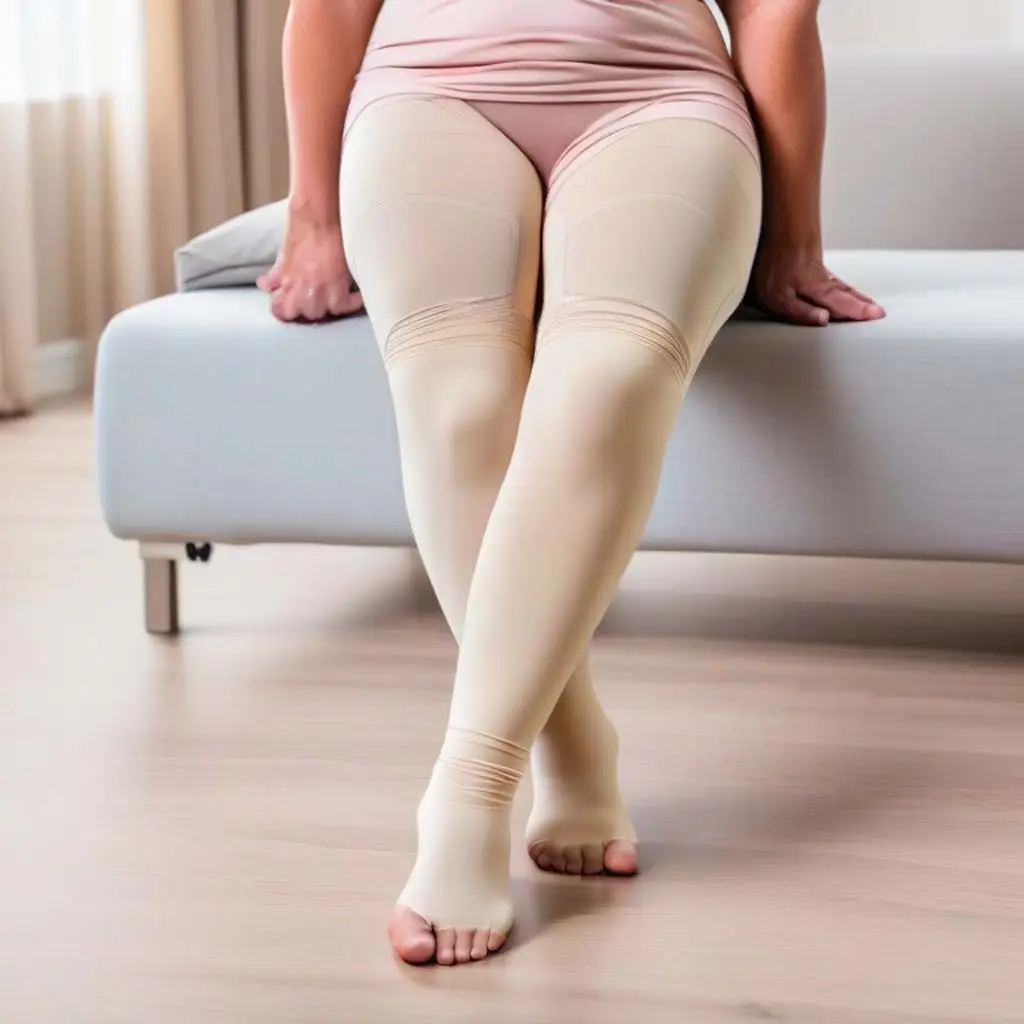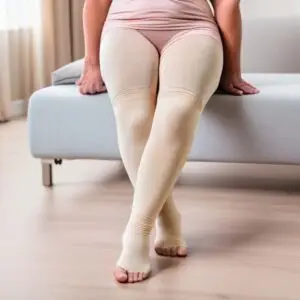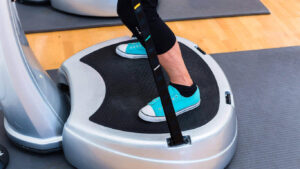Understanding Lymphedema Compression Garments and Products
Lymphedema is a chronic condition that can cause significant discomfort and limitations in daily activities. One of the most effective ways to manage this condition is through the use of lymphedema compression garments. These specialized products are designed to provide gradient compression, which assists in the proper functioning of the lymphatic system. In this article, we will explore what lymphedema compression garments are, how to choose the right ones, their benefits, and how to properly use and care for them. We will also review some popular brands and products available in the market.
What are Lymphedema Compression Garments?
Definition and Purpose of Compression Garments
Lymphedema compression garments are specially designed clothing items that provide consistent pressure on the affected areas of the body, such as the legs or arms. These garments are essential in lymphedema treatment as they help to manage and reduce the swelling caused by fluid retention, known as edema. The primary purpose of these garments is to facilitate lymphatic drainage, improving circulation and preventing the accumulation of lymphatic fluid in the tissues. By applying external pressure to the limbs, lymphedema compression garments help maintain the size of the affected area and prevent further complications associated with lymphedema.
Types of Compression Wear Available
There is a variety of compression garments available to cater to individual needs and preferences. Common types include compression stockings, compression arm sleeves, and compression wraps. Compression stockings are typically used for leg lymphedema and come in different lengths, such as knee-high and thigh-high options. Compression arm sleeves are designed for managing lymphedema in the arms and provide targeted compression. Additionally, compression wraps and bandages can be utilized for customized pressure application, allowing for versatility in treatment. Depending on the level of edema and the specific needs of the patient, the appropriate type of compression garment can vary.
How Lymphedema Compression Works
The effectiveness of lymphedema compression garments lies in their ability to deliver gradient compression. This means that the garment exerts more pressure at the distal end (farthest from the body) and gradually decreases it as it moves up the limb. This pressure gradient helps to promote lymphatic drainage by encouraging the flow of lymph fluid back towards the central lymphatic system. By doing so, compression garments for lymphedema can reduce swelling and enhance the overall function of the lymphatic system. The application of pressure through these garments is a crucial component in managing lymphedema and improving the quality of life for those affected by this condition.
How to Choose the Right Compression Garment for Lymphedema?
Understanding Size and Fit for Compression Garments
Choosing the right size and fit for compression garments is vital for their effectiveness. An ill-fitting garment can lead to inadequate compression, which may not provide the desired therapeutic benefits. To ensure the best fit, it is essential to take accurate measurements of the affected limb, including circumference at various points and the length of the limb. Most manufacturers provide size charts to assist in selecting the correct size. It is advisable to consult with a healthcare professional or a lymphedema therapist, who can recommend the appropriate measurements and garment size for optimal lymphedema management.
Comparing Compression Levels: Mild vs. Moderate vs. High
Compression garments come in various levels of compression, categorized as mild, moderate, and high. Mild compression is typically around 15-20 mmHg and is suitable for individuals with mild edema or those looking to prevent lymphedema. Moderate compression, ranging from 20-30 mmHg, is often recommended for those with moderate lymphedema. High compression, exceeding 30 mmHg, is used for severe cases where significant swelling is present. Understanding the appropriate compression level is crucial for effective lymphedema treatment, as it directly impacts the garment’s ability to facilitate lymphatic drainage and reduce edema.
Choosing Between Stockings, Sleeves, and Wraps
When selecting compression garments, individuals must consider their specific needs and preferences. Compression stockings are ideal for individuals experiencing leg lymphedema, while compression arm sleeves are designed to address swelling in the arms. Compression wraps offer flexibility and can be adjusted for varying levels of compression throughout the day. Additionally, products like compression gloves and gauntlets can be used for lymphedema affecting the hands. The choice between these options will depend on the location and severity of lymphedema, as well as personal comfort and lifestyle factors.
What Are the Benefits of Using Compression Garments for Lymphedema?
How Compression Aids in Lymphatic Drainage
The primary benefit of using lymphedema compression garments is their ability to aid in lymphatic drainage. By applying consistent pressure, these garments encourage the movement of lymph fluid through the lymphatic vessels, preventing its accumulation in the tissues. This is particularly important for individuals with compromised lymphatic function, as it helps to restore the balance of fluid in the body. Effective lymphatic drainage can significantly reduce the risk of complications associated with lymphedema, such as infections or skin issues, making compression garments a vital component in lymphedema management.
Reducing Edema and Swelling with Compression Wear
Another significant benefit of lymphedema compression garments is their ability to reduce edema and swelling. By exerting pressure on the affected areas, these garments help to limit the amount of fluid that can accumulate, resulting in less visible swelling. This not only improves the aesthetic appearance of the affected limb but also enhances functionality and comfort. Many individuals report a noticeable reduction in discomfort and heaviness in their limbs when using compression wear consistently, which can lead to increased participation in daily activities and improved quality of life.
Improving Mobility and Comfort with Compression Garments
Compression garments for lymphedema are designed not only to provide therapeutic benefits but also to enhance comfort and mobility. Many modern compression products are made with breathable materials that allow for ease of movement and daily wear. This means that individuals can wear compression garments throughout the day without feeling restricted or uncomfortable. Improved mobility is particularly important for those with lymphedema, as it allows them to engage in physical activities, maintain strength, and support overall well-being.
How to Properly Use and Care for Compression Socks and Sleeves?
Best Practices for Wearing Compression Garments
To maximize the benefits of lymphedema compression garments, it is essential to follow best practices for wearing them. Compression socks, arm sleeves, and other products should be put on in the morning when swelling is typically at its lowest. It is crucial to ensure that the garment fits snugly without being overly tight, as this can lead to discomfort. Many healthcare professionals recommend wearing compression garments throughout the day and removing them only during periods of rest or when recommended. Regularly checking the fit and comfort level of the garment is also important, as changes in lymphedema may require adjustments.
Washing and Maintenance Tips for Longevity
Proper care and maintenance of compression garments are vital to ensure their longevity and effectiveness. Most compression products should be hand-washed or machine-washed on a gentle cycle with cold water. It is important to avoid fabric softeners and bleach, as these can damage the elastic fibers that provide compression. After washing, air-drying is recommended to maintain the integrity of the garment. Following the manufacturer’s care instructions will help prolong the life of the lymphedema compression garments, ensuring they continue to provide the necessary support.
When to Replace Your Compression Products
Compression garments do not last indefinitely and should be replaced regularly to maintain their effectiveness. Signs that it may be time to replace your compression products include visible wear and tear, loss of elasticity, or if the garment no longer fits properly due to changes in swelling or body shape. Generally, it is recommended to replace compression socks and sleeves every 3 to 6 months, but this may vary depending on usage and care. Consulting with a healthcare professional can provide guidance on when to replace your lymphedema products to ensure optimal management of the condition.
What Are the Common Brands and Products for Lymphedema Compression?
Overview of Popular Brands like Jobst and Sigvaris
When it comes to lymphedema compression garments, several reputable brands stand out in the market. Jobst and Sigvaris are two of the most recognized names, known for their high-quality medical compression products. Jobst offers a wide range of compression stockings and sleeves that cater to varying levels of lymphedema, while Sigvaris is known for its innovative materials and comfortable designs. Both brands provide garments that are clinically tested and designed to meet the unique needs of individuals managing lymphedema, making them trusted choices for many patients.
Features of Circaid and Flexitouch Plus Garments
Circaid and Flexitouch Plus are other notable brands that offer unique products for lymphedema management. Circaid specializes in adjustable compression wraps that allow users to customize the level of compression based on their needs. This flexibility can be particularly beneficial for individuals with fluctuating edema. On the other hand, Flexitouch Plus provides a compression device that uses pneumatic compression therapy to enhance lymphatic drainage. This technology offers an alternative approach to traditional compression garments, providing patients with more options for effective lymphedema treatment.
Comparison of Compression Gloves and Gauntlets
For those experiencing lymphedema in the hands, compression gloves and gauntlets are essential products to consider. Compression gloves provide full coverage and support for the entire hand, while gauntlets typically cover the wrist and forearm but leave the fingers free. Both options are designed to reduce swelling and improve lymphatic flow in the hand. The choice between gloves and gauntlets will depend on the individual’s level of swelling, comfort preferences, and the specific areas that require compression. Consulting with a healthcare provider can help determine the most suitable option for managing hand lymphedema.
FAQs
Q: What are lymphedema compression garments and how do they work?
A: Lymphedema compression garments are specially designed medical compression products that help manage swelling caused by lymphedema or chronic venous insufficiency. They work by applying graduated compression to the affected extremity, promoting fluid movement and reducing swelling.
Q: What types of lymphedema compression garments are available?
A: There are various types of lymphedema garments, including compression sleeves, knee high compression stockings, and wraps for lymphedema. Each type is designed to provide effective compression to specific areas of the body.
Q: How do I choose the best compression garment for my needs?
A: To select the best compression garment, consider factors such as the level of compression required, the affected area (e.g., arm compression or lower leg compression), and whether you need daytime or nighttime compression garments. Consulting with a lymphedema specialist can also provide guidance.
Q: Can compression wraps be used with other lymphedema treatments?
A: Yes, compression wraps for lymphedema can be used in conjunction with other treatments, such as manual lymphatic drainage or pneumatic compression devices. Combining therapies can enhance the overall effectiveness of lymphedema management.
Q: What are the benefits of wearing lymphedema compression sleeves?
A: The benefits of compression sleeves include reducing swelling, improving circulation, and preventing the progression of lymphedema. They can also provide support during daily activities and help maintain skin integrity.
Q: Are there specific lymphedema garments designed for men and women?
A: Yes, there are lymphedema garments specifically designed for both women and men, taking into account anatomical differences and providing a better fit for each gender. This ensures optimal comfort and effectiveness of the compression.
Q: How often should I wear my lymphedema compression garments?
A: It is generally recommended to wear lymphedema compression garments during the day and remove them at night unless otherwise directed by your healthcare provider. Consistent use is key to managing symptoms effectively.
Q: What is the difference between short-stretch and long-stretch compression bandages?
A: Short stretch bandages provide high compression during movement, making them ideal for active patients, while long stretch bandages offer lower resting pressure. The choice between them often depends on the type of lymphedema and the patient’s activity level.
Q: Can I wash my lymphedema compression garments?
A: Yes, most lymphedema compression garments can be hand washed or machine washed on a gentle cycle. It is important to follow the manufacturer’s care instructions to maintain the elasticity and effectiveness of the garment.





